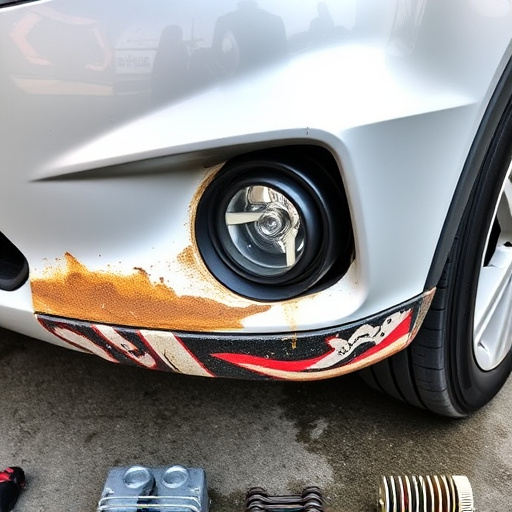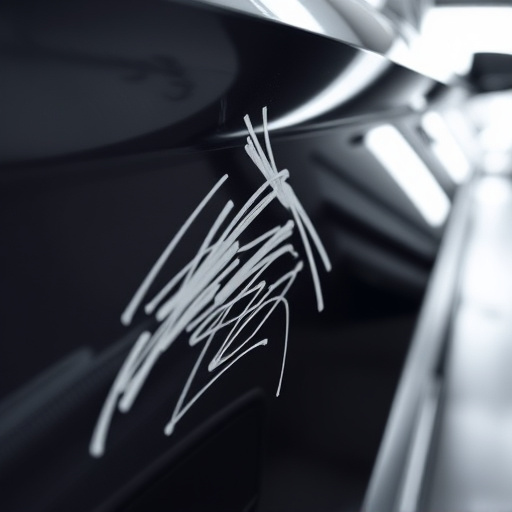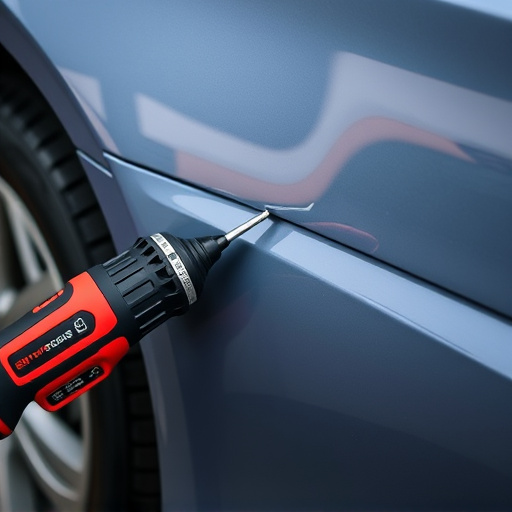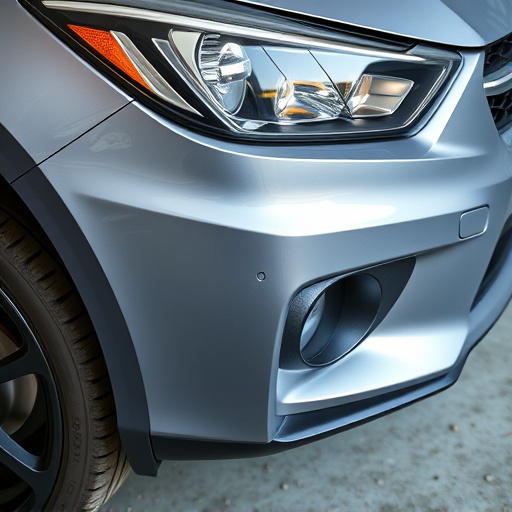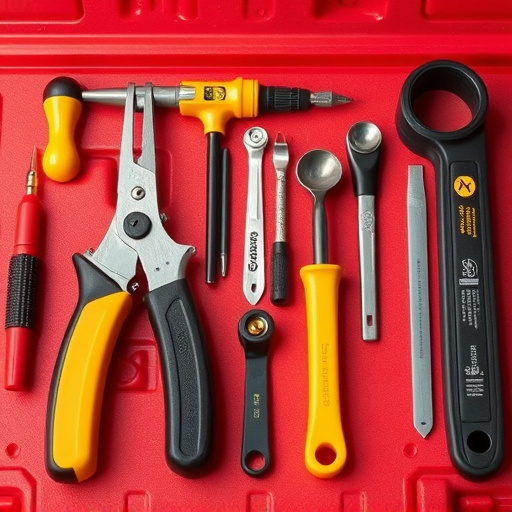Mercedes glass sensor calibration is a critical process for ensuring optimal performance of advanced driver-assistance systems (ADAS) under various weather conditions. Strategically placed sensors detect rain, bright lights, and other environmental factors. Proper calibration guarantees accurate data interpretation, enhancing safety features like automatic high beams and adaptive cruise control. Regular checking and adjustment are essential for safer driving, especially during unpredictable weather changes, and play a vital role in maintaining vehicle performance and resale value. For luxury repairs like Mercedes models, precise calibration is indispensable, affecting critical systems such as ABS, ESC, and ACC. Best practices involve cleaning the glass, performing baseline calibration with specialized tools, and testing under simulated weather conditions.
Mercedes glass sensor calibration is a critical aspect of ensuring optimal performance and safety in modern vehicles. This article delves into the intricate world of Mercedes sensor calibration for rain, light, and Advanced Driver Assistance Systems (ADAS). We explore how these sensors, crucial for safety features like adaptive cruise control and lane-keeping assist, require precise calibration to function effectively under varying weather conditions. By understanding the role of ADAS units and implementing best practices, drivers can ensure their Mercedes vehicles maintain superior sensor accuracy in all environments.
- Understanding Mercedes Glass Sensor Calibration for Rain and Light Conditions
- The Role of ADAS Units in Sensor Calibration
- Best Practices for Accurate Sensor Calibration in Modern Vehicles
Understanding Mercedes Glass Sensor Calibration for Rain and Light Conditions
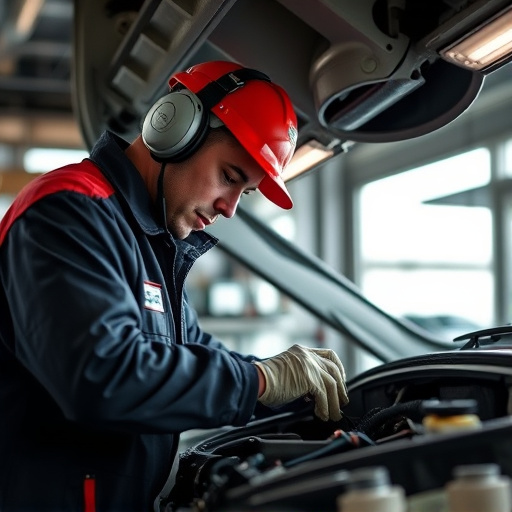
Mercedes glass sensor calibration is a critical process that ensures the vehicle’s advanced driver-assistance systems (ADAS) function optimally in various weather conditions. These sensors, strategically placed on the car’s windshield and windows, play a vital role in detecting rain, bright lights, and other environmental factors. Proper calibration enables the system to accurately interpret data, enhancing safety features like automatic high beams and adaptive cruise control.
Understanding how these sensors work is essential for vehicle owners and fleet repair services alike. Just as a car body restoration expert ensures the exterior’s protection, maintaining and calibrating Mercedes glass sensors safeguard drivers from potential hazards. By regularly checking and adjusting these components, you contribute to a smoother, safer driving experience, especially during unpredictable weather changes.
The Role of ADAS Units in Sensor Calibration
Advanced Driver Assistance Systems (ADAS) play a pivotal role in modern vehicles, enhancing safety and driving experience. These systems rely heavily on sensors to detect and interpret surrounding environments, including rain, light conditions, and obstacles. Sensor calibration is a critical process that ensures these ADAS units function accurately and reliably. For luxury vehicle repairs, such as those involving Mercedes models, precise glass sensor calibration is essential. It involves adjusting and fine-tuning the sensors’ performance to align with specific parameters, ensuring they provide accurate data for the car’s computer systems.
When a car body shop performs classic car restoration or luxury vehicle repair, they must pay close attention to sensor calibration, especially for Mercedes models known for their advanced technology. Proper calibration ensures that anti-lock braking systems (ABS), electronic stability control (ESC), and adaptive cruise control (ACC) function optimally, even under varying weather conditions. This precision is crucial not only for safety but also for maintaining the vehicle’s overall performance and resale value.
Best Practices for Accurate Sensor Calibration in Modern Vehicles
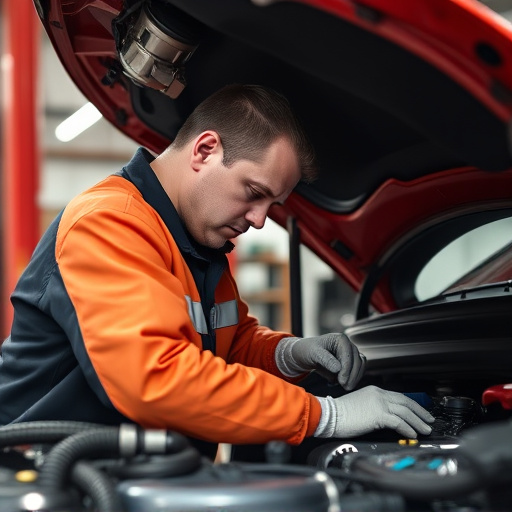
Maintaining accurate sensor calibration is paramount for modern vehicles’ advanced driver-assistance systems (ADAS) to function optimally in various driving conditions. For Mercedes vehicles, especially those equipped with cutting-edge glass sensors, proper calibration ensures reliable performance in rain, light, and other adverse weather scenarios. The best practices involve a systematic approach: start by ensuring the vehicle’s glass is clean and free from any debris or contaminants that could interfere with sensor readings. Next, use specialized tools to perform a baseline calibration, which serves as a reference point for future adjustments. This process should be conducted in controlled environments, mimicking different weather conditions, to ensure precision.
For fleet repair services or vehicle bodywork specialists, implementing these best practices is crucial when addressing collision damage repair. Accurate sensor calibration post-repair guarantees that safety systems function seamlessly, enhancing the overall driving experience and passenger safety. It’s a key step that not only ensures the car meets manufacturer standards but also promotes efficient, effective repairs for both new and used vehicles, including Mercedes models.
Mercedes glass sensor calibration is a critical process for ensuring optimal performance of Advanced Driver-Assistance Systems (ADAS). By understanding how rain, light conditions, and ADAS units interact, vehicle manufacturers can enhance safety and driving experience. Implementing best practices for accurate sensor calibration in modern vehicles is essential to navigate challenging weather conditions effectively, ultimately reducing the risk of accidents and improving road safety for all.


